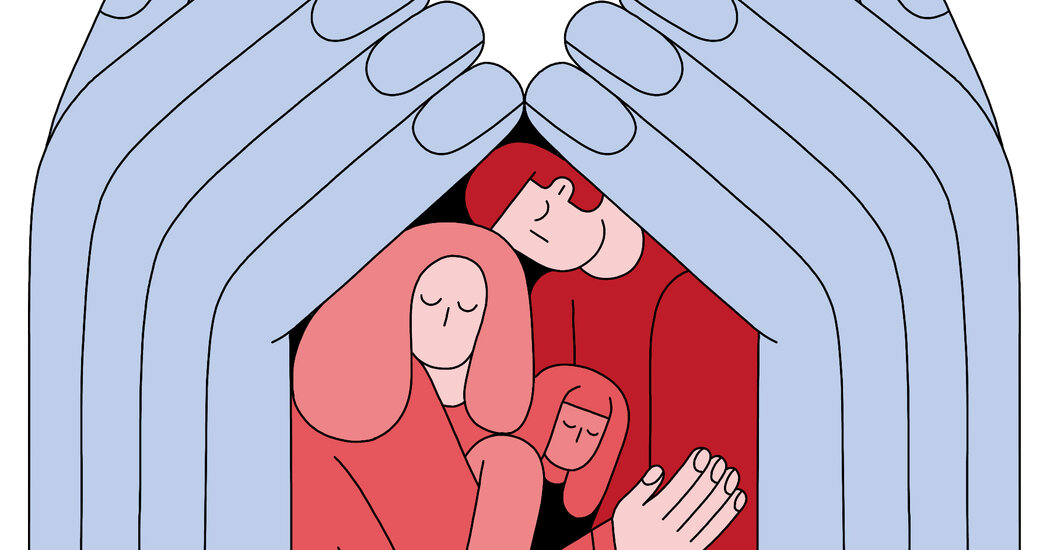Two-minute trials in crowded courtrooms. Ten-minute evictions. Incalculable suffering. Before Covid, this was — and had long been — the reality in many eviction courts. But during the pandemic, an influx of federal funds has helped courts begin dozens of eviction prevention and diversion programs for landlords and tenants. Often coupled with other reforms, like remote court hearings and community outreach efforts, these programs make eviction court easier to navigate and more accessible.
But federal Emergency Rental Assistance Program funds are running out, and only a handful of eviction moratoriums remain across states and cities. The end of rent and eviction relief comes at the worst possible time: Many people will soon face, and in some cases are already facing, the possibility of being evicted during winter, forced from their homes to face the cruel cold alone during the Omicron wave. The gains from these new programs are in danger of being halted, if not undone completely.
While federal funding may have spurred the initial reaction to the growing eviction crisis, state governments, and state courts especially, must continue the work of eviction prevention and diversion. While many evictions begin outside the state and local courts, many are ultimately finalized there. Rather than revert to the old ways of churning through eviction cases, courts should use this moment to preserve the pandemic-era programs, practices and partnerships that have helped countless people throughout the United States.
The wide array of eviction prevention and diversion programs share a common goal: to create an opportunity for all litigants — tenants and landlords — to have the time and resources to resolve their housing problems in the least harmful way possible. While not every eviction can or should be avoided, each eviction case must be given the attention it deserves. These programs help courts do just that. And by encouraging alternatives to eviction when possible, these programs and unprecedented levels of rental assistance helped avert the worst-case scenarios of mass eviction during the height of the pandemic.
Prevention and diversion programs enable courts to serve as a path toward stability. By holding virtual hearings, proactively sending tenants information about legal aid and rental assistance and slowing down the eviction process to give both tenants and landlords time to access those resources, courts ensure that their process is as fair as possible to all involved.
In Texas, the State Supreme Court started the nation’s first statewide eviction diversion program. It permits eviction cases to be paused for 60 days, allowing participating landlords and tenants time to apply for rental assistance, and requires that information about the program be included in both English and Spanish on all eviction notices.
In Washington, D.C., the Superior Court expanded its existing landlord-tenant assistance program. It established remote access terminals across the city to allow litigants to participate in virtual court hearings safely and conveniently, even if they did not have the necessary technology at home. The prevention and diversion programs developed during the pandemic made possible the once-unimaginable: affording appropriate respect to the time and dignity of each litigant.
Programs like these have benefited both tenants and landlords. One success story involves a mother of four in Chicago, who lost her job during the pandemic and fell behind on her rent, and her building’s owner, a recent immigrant who was struggling to navigate the legal process of recovering his property without a lawyer and in an unfamiliar language. Without a diversion program, both could have moved forward to a trial for which neither was prepared. Instead, they were referred to a new program where, with the help of legal aid and the help of an interpreter, they were able to quickly settle their case without a trial or an eviction judgment.
The eviction crisis in America existed before the pandemic and will continue even when it has subsided. One single eviction case can have far-reaching consequences, affecting a tenant’s financial, educational and housing stability, as well as the ability of the landlord to maintain her or his property. By continuing to look outside their walls and collaborate with legal aid organizations, mediation centers and other community partners, courts can better address the root causes of eviction and reach more sustainable resolutions. The federal government has supported these efforts, convening national summits encouraging state and local courts to establish diversion programs and other creative court reform efforts that can reduce the harm of eviction.
Reducing the harm of eviction: That is the goal of the National Center for State Courts’ new eviction diversion initiative. We serve as members of its advisory council. The initiative will provide funding to state courts to hire staff members to ensure the sustainability of their eviction prevention and diversion work. If combined with support from states themselves, the initiative can help courts not only preserve their pandemic-era practices and programs, but expand them.
Examples like those from Washington, D.C., Texas and Chicago show that eviction diversion and prevention programs can work. They can prevent unnecessary evictions, and they can mitigate the harm of those that must move forward. They can change the way community members perceive and interact with housing courts. They can turn housing courts into points of connection to a wide range of legal and supportive services rather than places of last resort.
As Winston Churchill has been credited with saying, “never let a good crisis go to waste.” If courts simply return to their prepandemic practices, they will have done exactly that.
Anna Blackburne-Rigsby is chief judge of the District of Columbia Court of Appeals. Nathan Hecht is chief justice of the Supreme Court of Texas.
The Times is committed to publishing a diversity of letters to the editor. We’d like to hear what you think about this or any of our articles. Here are some tips. And here’s our email: letters@nytimes.com.
Follow The New York Times Opinion section on Facebook, Twitter (@NYTopinion) and Instagram.


























